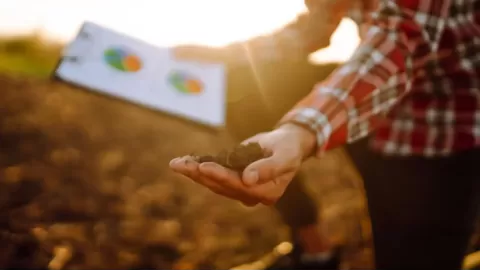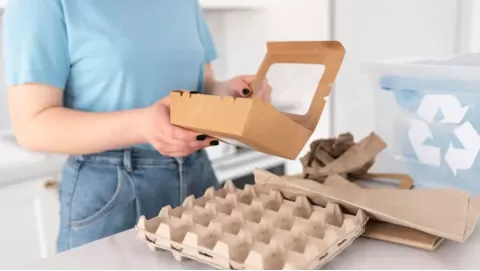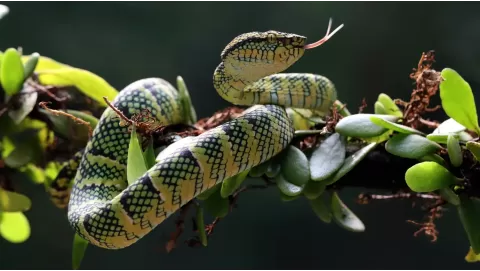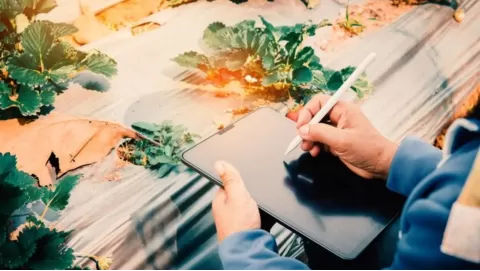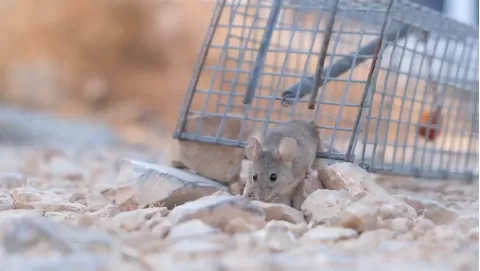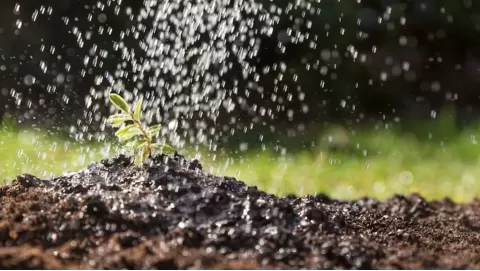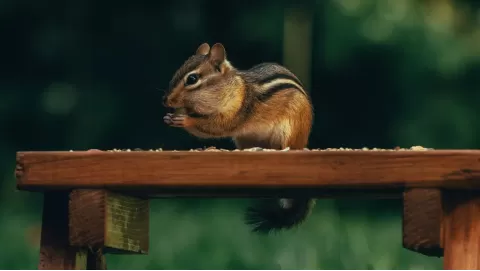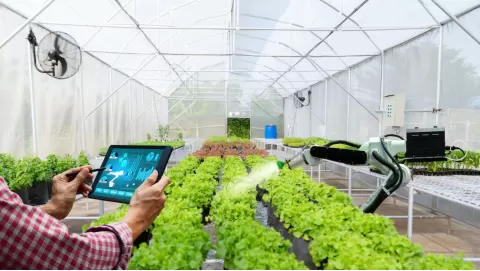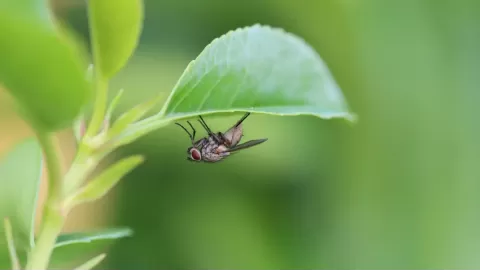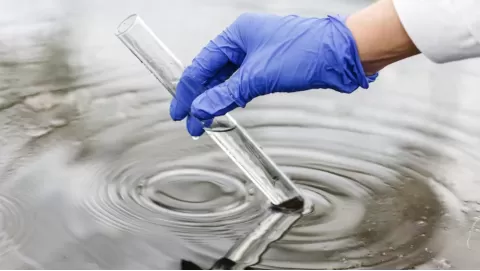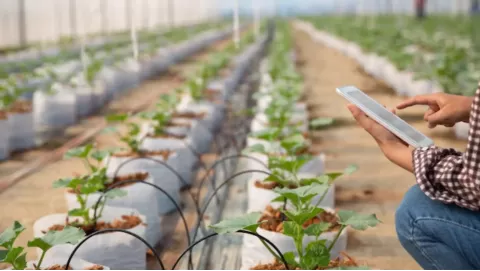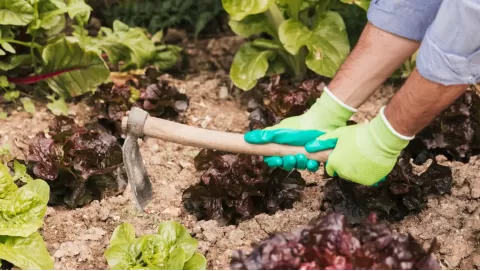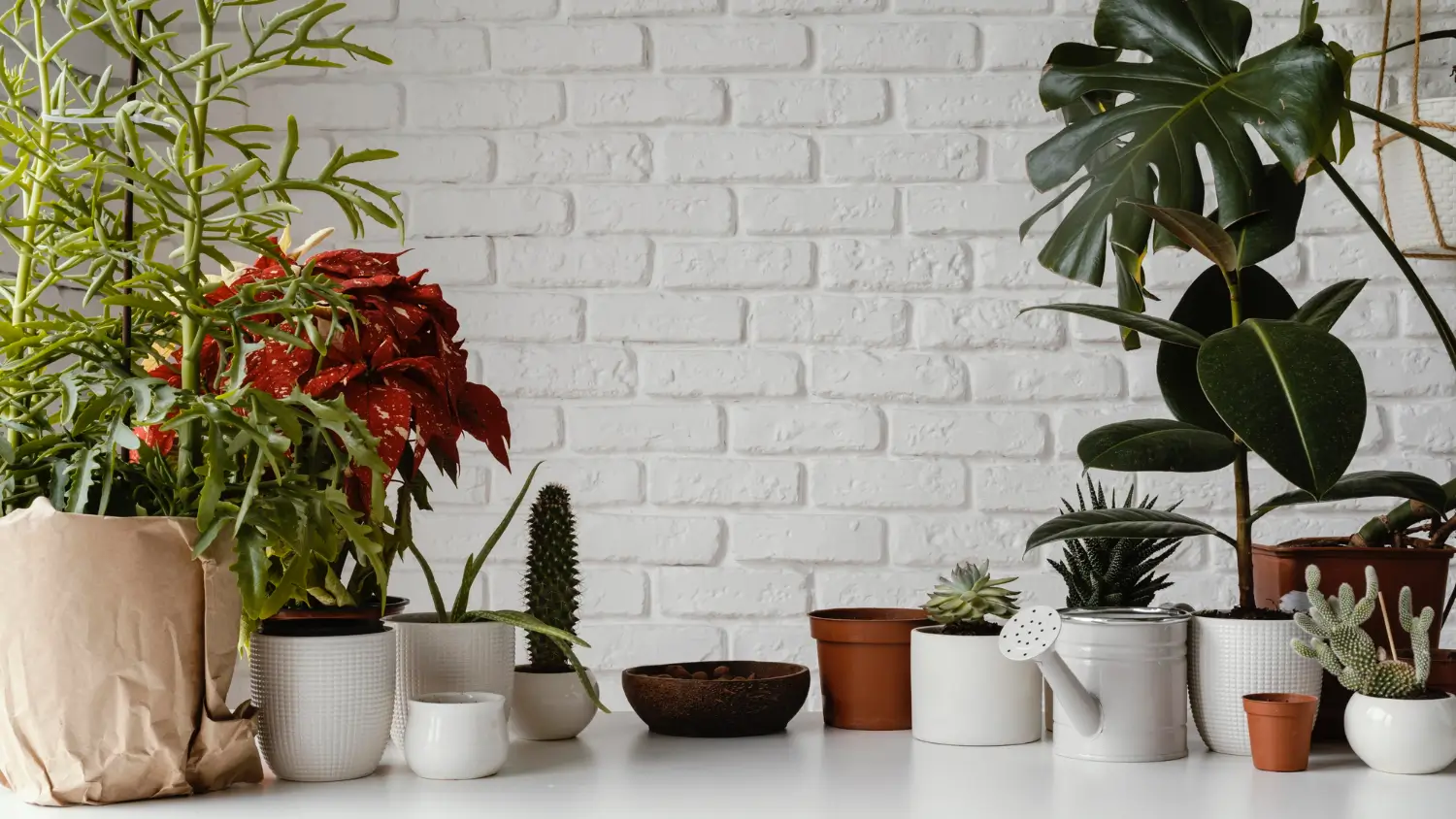
The best indoor planters for small spaces: Save room without sacrificing style
Living in a tiny apartment, dorm room, or compact plant containers can make life very difficult. There isn’t always space for additional décor, and that often applies to indoor plants as well. Between furniture, storage and everyday activity, it becomes difficult to find room for some greenery.
But there is good news. One doesn’t need a palatial abode to benefit from the beauty and calm of indoor plants. There are special planters designed for small spaces that slide right into shelves, corners or on windowsills. These planters have stylish and modern designs that also match room decor.
Studies have shown that even one small plant can help alleviate stress and boost concentration. So limited space doesn’t mean giving up on nature. Growcycle provides numerous gardening products, for example, indoor planters.
Understanding Small-Space Planting Needs
It’s a good idea to bring plants into a small home, but do it right with a bit of planning. Not every plant or planter is made for narrow quarters. Choosing the right spot, plant and container can save space and keep things looking tidy and manageable.
Assessing Space
It’s a good idea to take a look around and see where a planter would look nice before buying one. Some might have very little ground space, like a corridor next to a window. Still others may not have enough space for a full garden but yet have a wall to spare, which is the case with wall planters or shelves.
Window ledges are also handy, especially for small pots or herbs. If people don’t have much space on the ground, the vertical use of it is a good idea. Hanging planters for small spaces, as well as shelves or wall planters, can keep things off the floor and out of the way.
Matching Planters to Plant Types
Other plants grow quickly and large, which don’t do well in small spaces. It’s preferable to select those that remain small and require minimal care. Here are a few good choices:
- Air plants: These require no dirt and can be placed in small glass holders or hung on the wall.
- Succulents: They’re small and love the sun.
- Pothos or snake plants: These can survive in low light and thrive in small pots.
Key Functional Criteria
It’s hard not to be attracted to a planter with a nice appearance, but how it functions is important as well. Here are some signs to look for:
- Drainage holes: These allow excess water to escape so that the plant’s roots don’t rot.
- Self-watering features: These are ideal for the forgetful or frequent travelers.
- Durable materials: Planters made from ceramic, metal or heavy-duty plastic hold up better over the long haul and are easier to clean.
Types of Space-Saving Indoor Plant Pots
Selecting the right kind of planter is vital for a small space dweller. Luckily for home dwellers, there are a lot of creative solutions designed for small living, so budding plant owners don’t need to sacrifice valuable indoor real estate. From wall-mounted pots to furniture with integrated planters, there’s something for every arrangement.
1. Vertical and Wall Planters
An intelligent thing to save space is to make use of the walls. Vertical indoor planters for small apartments work well as they don’t occupy any floor area.
A great option for this is modular wall panels. The containers are joined so that many small plants can be kept together in a single location. Others use repurposed wood pallets to form DIY pallet gardens that serve as plant holders. These lean against a wall or hang from it. Both make ideal homes for herbs, succulents or trailing plants, and transform even a plain wall into something beautiful.
2. Hanging Planters
Hanging planters are also a space-saving indoor plant pots idea. They drape from ceiling or wall hooks to keep shelves and floors clear. These planters work great in corners, alongside windows, or on top of furniture.
There are styles to suit a range of tastes:
- Macramé hangers: Knotted rope creates a soft, boho vibe.
- Ceramic pots: These are durable and are available in many colors and shapes.
- Self-watering planters: Great for people who don’t have time to water plants regularly.
These are better for small plants like air plants or vines and give a fresh look to any room.
3. Tiered and Stackable Planters
It is a plant tower aka tiered planters. They allowed people to grow many plants in a small area by stacking them vertically. The terraced planters feature pockets for planting, and the layers stack onto one another. This sort of planter is well-suited to herbs, little vegetables, strawberries or hanging greenery plants.
They can go on balconies, in kitchen corners or even on a sunny windowsill. They’re a perfect option for people with limited space.
4. Windowsill and Shelf Planters
People tend to overlook windowsills and narrow ledges, but they’re great for small plants.
Planter boxes for windowsills are long and thin. They don’t require much space and can accommodate a few plants in a row. There are boxes with an integrated water storage system, keeping the plants hydrated longer.
These are great for kitchens as well. People, for example, can grow herbs like basil, mint, or parsley right next to the window and use them fresh in prepared meals.
5. Furniture with Built-In Planters
Now, some modern furniture has spots for plants integrated. With these, one can get useful, stylish things that save space and bring a little nature into the room.
Examples include:
- Planter benches: Benches for seating to which planters have been attached either to the sides or in the middle.
- End tables with pots: Small side tables that have an integrated planter.
These types of furniture are convenient in living rooms or small entryways where space is limited. They let people enjoy plants without needing any extra room.
Top Planter Picks & Products
Take a closer look at Growcycle’s top planter picks, including how they work, what they’re best for and key features.
1. SSI 4.5" Pebble Planter
This is a small, rounded planter with a soft white color and a stone-like texture. It will fit compactly on a small surface, like a desk, kitchen shelf or bathroom counter. This is great for its small succulents, such as cacti, or a young plant that doesn’t use much soil. It gives a clean, natural look to cramped spaces.
- Size: 4.5 inches wide and 4 inches tall.
- Has a smooth, pebble-style surface.
- Includes a drainage hole to prevent overwatering.
2. SSI 6.5" Stoneware Tapered Pot
This mid-sized planter is constructed of solid stoneware and has a timeless shape that narrows slightly at the bottom. Its clean white finish suits modern and traditional rooms alike. Ideal for plants, like snake plants, pothos, or spider plants, that require a little more space to spread out.
- Size: 6.5 inches wide and 6 inches tall.
- Sleek tapered profile for a polished finish.
- Made out of thick, heavy material.
3. APM LED Self-Watering Planter
This is a smart solution for those with a love of plants who forget to water regularly. It’s also illuminated with a soft LED light to give off a warm glow at night. It’s perfect for bedrooms, reading nooks or offices where a softer light is appropriate. Does well with smaller leafy plants or ferns.
- Size: 4.5 inches wide and 6.25 inches tall.
- Built-in self-watering system.
- LED lighting with an automatic 2-hour timer.
4. Bloem 10" Hopson Planter with Metal Stand
This modern planter comes with its own stand, lifting the plant off the floor or shelf for a more stylish look. It’s sleek, black, and fits in with modern or minimalist indoor planter solutions. It's perfect for taller plants like fiddle-leaf figs, rubber plants, or large ferns. Looks great in corners or next to furniture.
- Pot size: 10 inches wide and 9 inches tall.
- Comes with a metal stand that provides 4 additional inches of height.
- Constructed of lightweight but long-lasting plastic.
5. APM Air Plant Jellyfish
This was designed to look like a jellyfish. It’s designed for air plants, which grow without soil. Ideal for air plants in bathrooms, kitchens or windows. Brings a playful, artistic vibe to the space.
- Size: 4 inches wide and 6 inches tall.
- Made from hand-blown glass.
- Featuring a string for hanging.
Styling & Decor Integration
Bringing plants into a space does more than just add greenery. With the right styling, planters can serve as part of the home’s overarching design. Here are a few creative ways to style planters and personalize this space.
Color, Texture & Material Mix
Incorporating different materials into a plant display is one of the best ways to make it visually engaging. Ceramic pots have a sleek, polished look; terracotta has a beautiful warm, earthy tone. Metal planters, especially black or gold ones, can have a modern or industrial look. Woven baskets, on the other hand, introduce softness and a cozy, natural element.
Keeping these different textures in balance can make a space feel layered rather than busy. A matte ceramic pool looks next to a metal planter with a brushed matte finish. A terracotta pot nestled in a woven basket mixes modern and rustic styles. The trick is to choose two or three types of material and repeat them throughout the space for a cohesive finish.
Grouping & Layering
Using planters of varying heights adds visual depth. Instead of planting all the plants in a single row, experiment with creating clumps or clusters of three or five plants. Use plant stands, small stools or stack books to lift some of the planters.
Place a taller plant in the back, a medium height in the middle and a small one in front, creating a mini plant scene that engages the eye. Combining shapes, for example, with round pots or tall, thin pots, adds interest. This overlaying trick is nice to do in corners, on window sills or next to furniture, where people want to break up a flat line of decor.
Complementary Decor Elements
Incorporating elements from the room helps a plant setup feel integrated, rather than an afterthought. Hanging a small piece of art next to a grouping of planters helps unify the space. Mirrors reflect the green of plants, so they make the space feel both brighter and bigger.
Accent lighting like table lamps, fairy lights or strips of LED can also help bring out plants in the evening. A beautifully lit plant in a designer pot can be a focal point like a piece of art. Consider hiding a floor lamp behind a tall plant or pointing clip-on lights at a shelf of greenery.
DIY & Upcycling Ideas
Decorating with plants does not have to mean purchasing new planters. Use everyday items to make creative pots. The old mugs, tea cups and bowls can hold little succulents. Painted or wrapped in rope, tin cans make adorable rustic planters. Even old wooden boxes or baskets might work, lined with plastic and used to group larger plants.
Not only does this upcycling process save money, but it also includes character. When arranged thoughtfully, a mismatched collection of upcycled planters can be quite beautiful. It’s also a wonderful way to breathe new life into items that might be discarded.
Care & Maintenance Tips
Plants can grow in fairly small spaces, but they need a little bit of love. Here are some simple tips to help keep plants healthy and looking their best.
Watering
- Stick a finger an inch deep in the soil to check moisture; if it’s dry, water the plant.
- Do not overwater; some require less than others (ex, succulents).
- Self-watering planters are helpful, though moisture levels should be monitored.
Light
- Low-light plants: Snake plants and pothos do well in low light.
- Medium to light plants: Avoid direct light for peace lilies.
- Light the plants: Succulents and cacti require bright, direct light.
- For even light exposure, rotate plants every few weeks.
Pruning & Deadheading
- Prune dead or yellowing leaves and stems to protect healthy growth.
- Pruning stimulates new growth, particularly for succulents.
- Deadheading (snipping off spent flowers) encourages more blooms in geraniums.
Soil Maintenance
- This helps to avoid compaction and nutrient loss, so refresh the soil each year.
- Repot plants that outgrow their containers into pots 1-2 inches larger.
- Plant in well-draining, fresh soil for healthy growth.
Cleaning Planters
- For ceramic and metal pots, use a damp cloth to wipe away dust.
- Wear and tear on the surfaces of the woven or fabric planters can be minimized by vacuuming or brushing them to remove debris.
- Prevent clogging the drains in order for them to drain well.
- Be sure to clean any saucers or trays under pots so that no water builds up.
Pest Control
- Check plants periodically for pests such as aphids or spider mites.
- Gently wipe leaves with a damp cloth or spray with insecticidal soap to remove pests.
- If you see an infestation, remove the plant until the problem is resolved.
FAQs
What are the best indoor plants for small spaces?
Succulents, snake plants, pothos and other low-maintenance plants are ideal for small spaces. They need little light or space in which to flourish.
What type of planter is best for apartments?
For indoor planters for small apartments, modular living-wall systems, hanging planters for small spaces, and small tiered planters are suitable choices. They elevate plants and take advantage of the wall or ceiling area, which is ideal for compact plant containers.
Can I use self-watering planters for all types of plants?
Yes, most plants can be grown in self-watering planters, provided the plant’s water needs are compatible with the features of the planter. They’re great for people who have a habit of forgetting to water.
The Bottom Line
With the right plants, planters and the right spots to place them in, anyone can add a touch of nature to their home. That means that indoor plants not only look good in a space, they also help in stress reduction, improve focus and help people feel better overall. With some ingenuity and the right planters, even the tiniest spaces can have a warm, leafy vibe.
Visit Growcycle to get high-quality indoor planters that are perfect for small spaces. They help people find the best planters to match their needs, ensuring plants thrive in any setting.
Disclaimer: This material is for informational purposes only and should not be relied on for legal, medical, financial, or any other form of professional advice.



